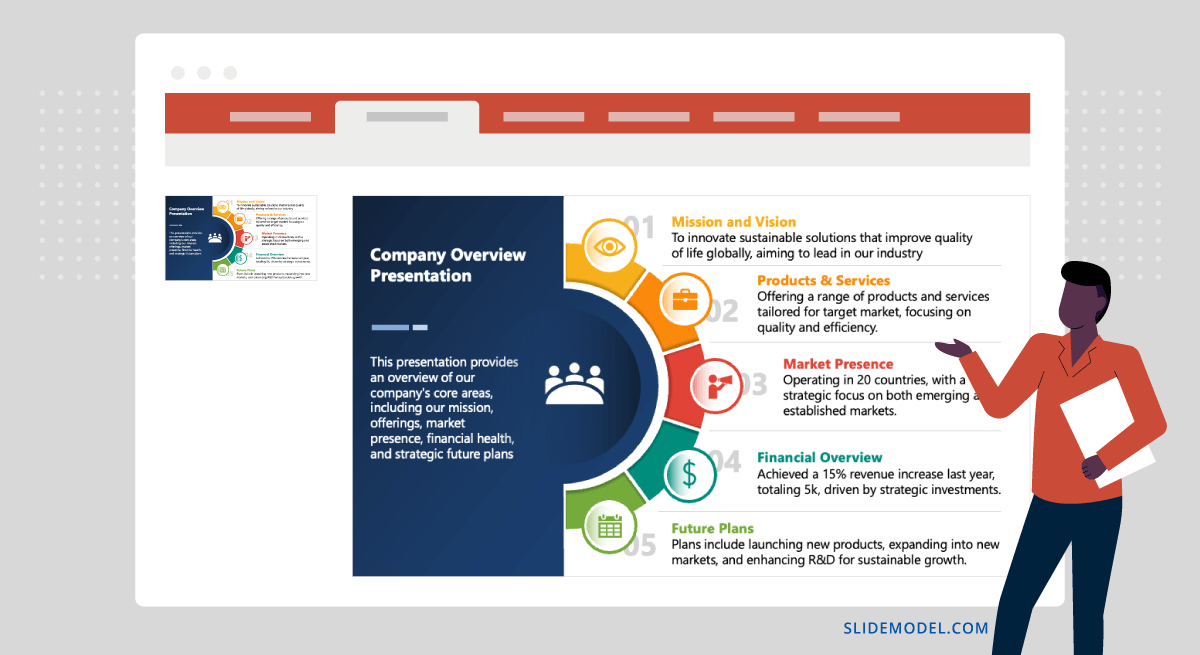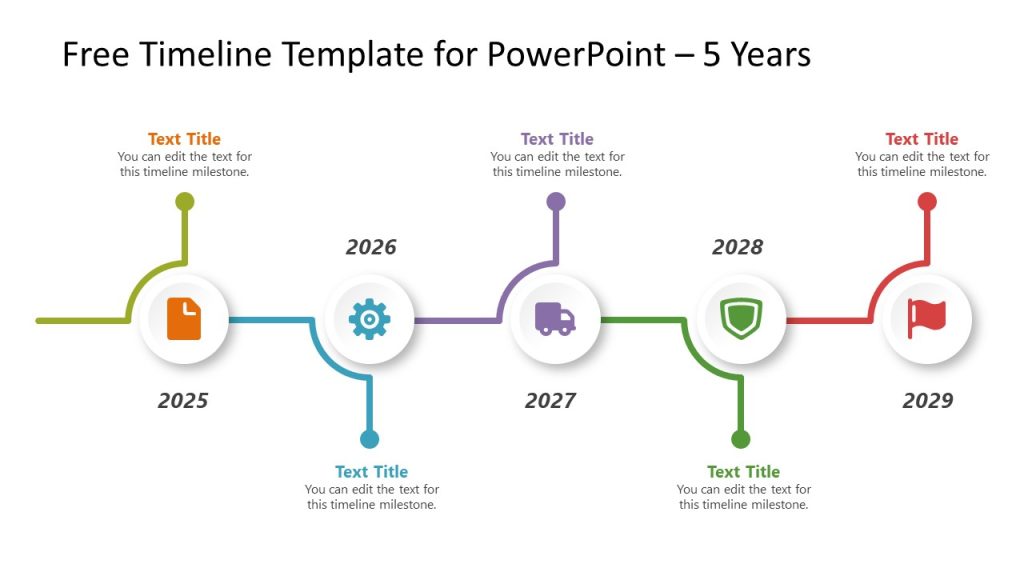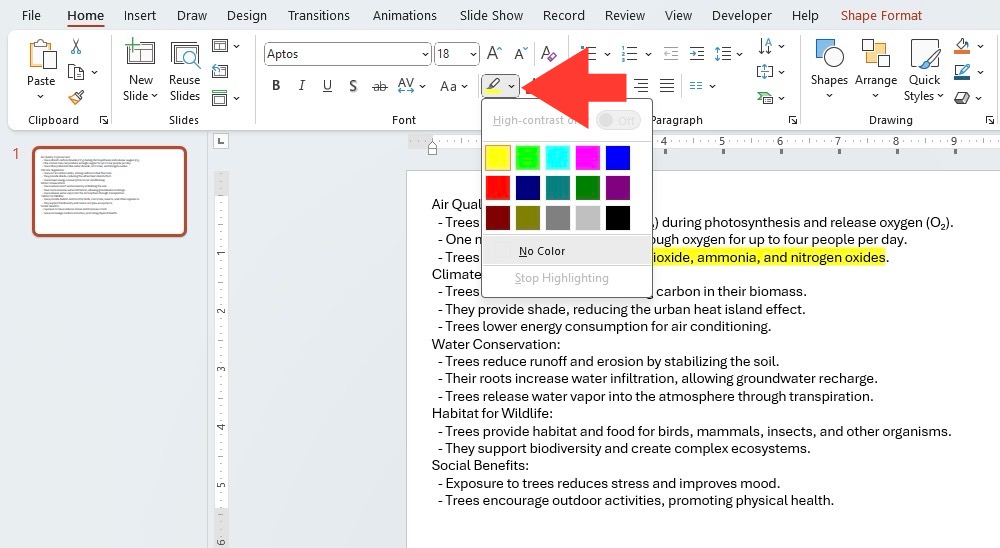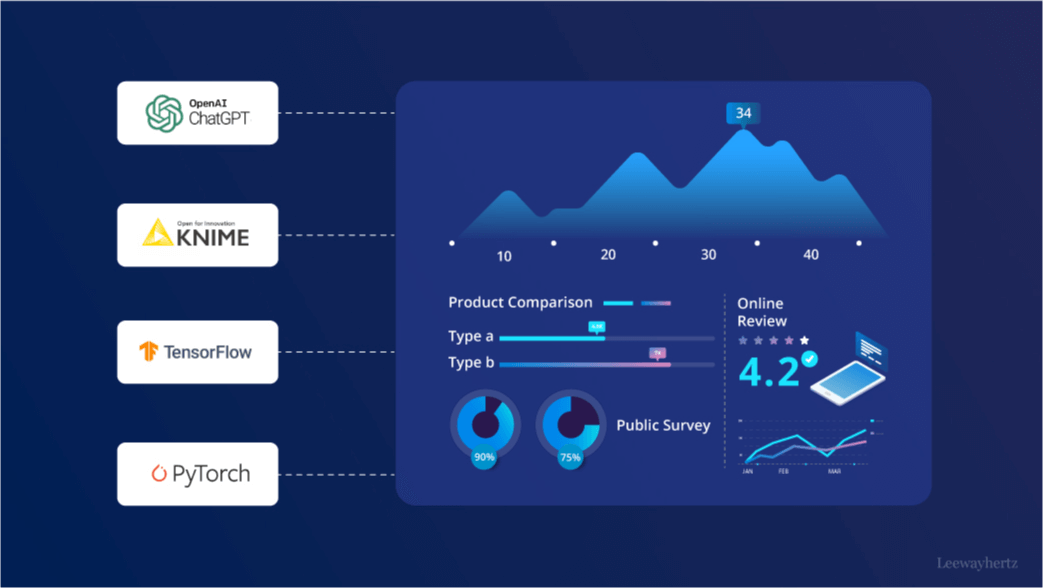The Art of Slide Transitions: Creating Smooth, Professional Presentation Flow
Master the perfect timing for captivating presentations
I've always believed that the difference between an amateur presentation and a professional one often comes down to the subtle details. One of those crucial elements is how smoothly you transition between slides. When I first started creating presentations, I would either ignore transitions completely or go overboard with flashy effects. Both approaches undermined my message.
In this comprehensive guide, I'll share what I've learned about the art of transition speeds - that perfect timing sweet spot that keeps your audience engaged without distracting from your content. Whether you're preparing for a high-stakes business pitch, an academic lecture, or a creative showcase, mastering transition flow will elevate your presentation to a professional level.

Let's dive into the science and art of perfecting your slide transitions to create presentations that flow seamlessly and keep your audience focused on what matters most - your message.
Understanding Transition Speed Fundamentals
When I create presentations, I've found that understanding the science behind how viewers perceive slide movement is essential. Our brains process visual information in specific ways, and transition speeds directly impact how well audiences absorb and retain the content I'm sharing.
The Psychology of Transition Speed
The psychological impact of transition speeds is fascinating. When transitions are perfectly timed, they create a sense of flow that helps maintain audience attention and improves information retention. It's like creating a visual rhythm that guides viewers through your story.
Ideal Transition Duration Guideline
Through experience and research, I've found that transitions between 0.5-1 second typically maintain optimal flow. This range provides enough time for the brain to register the change without creating a disruptive pause in the presentation rhythm.
Transition Speed Impact on Audience Engagement
flowchart TD
A[Slide Transition Speed] --> B[Too Fast <0.5s]
A --> C[Optimal 0.5-1s]
A --> D[Too Slow >2s]
B --> E[Audience Reaction]
C --> E
D --> E
E --> F[Jarring/Disruptive]
E --> G[Smooth/Engaging]
E --> H[Boring/Disengaging]
style C fill:#FF8000,stroke:#333,stroke-width:1px
style G fill:#66BB6A,stroke:#333,stroke-width:1px
I've also discovered that PageOn.ai's AI Blocks feature is particularly helpful in this area. When I'm unsure about which transition speed would work best for a specific slide, the AI can analyze my content and suggest appropriate timing based on the type of information I'm presenting and the overall context of my presentation.
Audience Information Retention by Transition Speed
The following chart shows how different transition speeds affect audience information retention:
As the chart illustrates, I've found that transition speeds between 0.5-1 second consistently produce the highest information retention rates among audiences. This aligns with research on optimal presentation transitions, which suggests this range maintains a smooth and engaging flow without distracting viewers.
Common Transition Speed Pitfalls
Throughout my presentation design experience, I've identified several common mistakes that can undermine even the best content. Being aware of these pitfalls has helped me avoid them in my own work.
Too Fast: The Jarring Effect
When I've used transitions under 0.5 seconds, I've noticed they create a jarring, almost disorienting effect. The audience barely registers one slide before another appears, disrupting comprehension and creating visual stress. This rapid pace can make viewers feel overwhelmed and miss key information.
Too Slow: The Engagement Killer
Conversely, I've learned that transitions exceeding 2 seconds create uncomfortable pauses that break the flow of my presentation. Audience attention wanders during these gaps, and the momentum I've built with my content dissipates. These slow transitions can make even dynamic content feel sluggish.
Another mistake I've made is using inconsistent timing patterns across slides. This creates an unpredictable rhythm that subconsciously distracts the audience from my message. When transitions vary wildly between slides without purpose, viewers focus on the changing pace rather than the content.

To avoid these pitfalls in my PowerPoint presentations, I've found PageOn.ai's Vibe Creation feature incredibly helpful. It analyzes my entire presentation to maintain consistent, professional transition pacing throughout all slides. This ensures I deliver a cohesive experience that keeps my audience engaged from start to finish.
Audience Reaction to Transition Speed Issues
Strategic Transition Speed Selection
I've discovered that strategic transition speed selection isn't about finding one perfect speed and applying it universally. Instead, I approach it as a dynamic element that should adapt to my content and presentation goals.
When I create presentations, I match transition speeds to content complexity and information density. This thoughtful approach ensures my audience has just the right amount of time to process each slide before moving to the next.
Strategic Transition Speed Selection Framework
flowchart TD
A[Assess Content Type] --> B{Content Complexity}
B -->|Data-Heavy| C[Slower Transition: 1-1.5s]
B -->|Conceptual/Visual| D[Standard Transition: 0.5-1s]
B -->|Dramatic Reveal| E[Custom Timing for Impact]
C --> F[Consider Audience]
D --> F
E --> F
F --> G[Adjust for Context]
G -->|In-Person| H[Standard to Slightly Faster]
G -->|Virtual| I[Slightly Slower]
G -->|Screen Size| J[Adjust for Viewing Environment]
Content-Based Speed Guidelines
| Content Type | Recommended Speed | Reasoning |
|---|---|---|
| Data-heavy slides | 1-1.5 seconds | Allows audience time to process complex information and identify key data points |
| Conceptual or visual slides | 0.5-1 second | Maintains smooth flow while giving sufficient time to grasp visual elements |
| Dramatic reveal points | Custom timing | Strategic pauses before or slightly slower transitions to build anticipation |
| Text-heavy slides | 1-1.2 seconds | Provides a moment for audiences to register the new content before you begin speaking |
I've also found that adjusting speeds for emotional impact at key presentation moments can be incredibly effective. For example, when I'm building toward a major conclusion or revealing an important insight, I might slightly slow a transition to create anticipation.
PageOn.ai's Deep Search feature has been invaluable in my work with professional slides. It analyzes successful presentations to recommend optimal transition speeds for specific content types, helping me make data-driven decisions rather than relying solely on intuition.

When creating powerpoint slide designs that need to maintain audience engagement, I've found that PageOn.ai can automatically detect content complexity and suggest appropriate timing, which saves me considerable time in the editing process.
Technical Implementation Across Platforms
Understanding the theory behind transition speeds is important, but I've found that knowing how to technically implement these changes is equally crucial. Let me share the practical steps I follow when adjusting transition speeds in PowerPoint.
Step-by-Step: Adjusting Transition Speeds in PowerPoint
Step 1: Select Your Slide
First, I select the slide where I want to adjust the transition. This can be done in the slide thumbnail pane on the left side of the PowerPoint interface.
Step 2: Access the Transitions Tab
I navigate to the "Transitions" tab in the PowerPoint ribbon at the top of the screen. This tab contains all the controls needed for managing slide transitions.
Step 3: Locate the Duration Control
In the "Timing" group on the Transitions tab, I find the "Duration" box. This is where I can set the exact speed of my transition in seconds or fractions of seconds.
Step 4: Adjust the Speed
I enter my desired transition duration. For professional presentations, I typically use values between 0.50 and 1.00 seconds, depending on the content complexity.
Step 5: Preview the Transition
I always click the "Preview" button in the ribbon to see how my transition looks before finalizing it. This helps me make adjustments if needed.
Step 6: Apply to All Slides (Optional)
If I want consistent transition timing throughout my presentation, I click the "Apply to All" button in the Timing group. This applies the same transition speed to every slide.

While these technical steps are straightforward, I've found that PageOn.ai simplifies the process even further through intuitive voice commands and drag-and-drop functionality. When creating a professional visual presentation in powerpoint, I can simply tell PageOn.ai my preferred transition style and speed, and it applies these settings automatically.
PowerPoint Transition Control Workflow
flowchart LR
A[Select Slide] --> B[Access Transitions Tab]
B --> C[Choose Transition Effect]
C --> D[Locate Duration Control]
D --> E[Enter Speed Value]
E --> F{Apply to All?}
F -->|Yes| G[Click Apply to All]
F -->|No| H[Preview Single Slide]
G --> I[Preview Full Presentation]
H --> J[Move to Next Slide]
J --> D
For those creating effective slides for language teaching or other specialized contexts, consistent transitions are particularly important. The "Apply to All" functionality ensures a smooth experience for students following along with the material.
Advanced Transition Speed Techniques
As I've grown more comfortable with basic transition speed management, I've explored more sophisticated approaches that can truly elevate a presentation. These advanced techniques help me create a more dynamic and engaging experience for my audience.
Combining Effects with Strategic Timing
One of my favorite techniques is combining specific transition effects with carefully calibrated speeds to enhance visual storytelling. For instance, when revealing sequential information, I might use a "Wipe" transition at 0.7 seconds to suggest continuity, while a "Fade" at 0.9 seconds can create a more reflective moment between conceptual slides.
Transition Effect and Speed Pairing Guide
Creating Micro-Variations in Speed
I've discovered that subtle variations in transition speeds—even differences of 0.1-0.2 seconds—can create a subconscious rhythm that keeps audiences engaged. Rather than using exactly 0.8 seconds for every transition, I might vary between 0.7-0.9 seconds in a purposeful pattern that aligns with my content's flow.
Synchronizing with Audio Elements
When my presentations include audio elements, I carefully synchronize transition speeds with the audio rhythm. For example, if I'm using background music, I might time slide transitions to coincide with natural breaks or beats in the music, creating a more immersive and cohesive experience.
PageOn.ai's Agentic capabilities have transformed how I approach these advanced techniques. The platform can create sophisticated transition sequences that adapt to my presentation flow, analyzing both content and context to suggest optimal timing variations. This AI-powered approach saves me hours of manual adjustments while creating a more polished result.
Advanced Transition Strategy Decision Tree
flowchart TD
A[Advanced Transition Strategy] --> B{Presentation Type}
B -->|Data-Focused| C[Consistency Priority]
B -->|Narrative-Driven| D[Dynamic Variation]
B -->|Mixed Content| E[Sectional Approach]
C --> F[Uniform Speed: 0.8-1.0s]
C --> G[Minimal Effect Variation]
D --> H[Speed Pattern: 0.6-1.2s]
D --> I[Effect Matches Content]
E --> J[Section-Specific Speeds]
E --> K[Transition Signaling]
J --> L[Content Type Determines Speed]
K --> M[Unique Transition Between Sections]
Testing and Optimization Methods
I've learned that even the most carefully planned transition speeds benefit from testing and refinement. Before finalizing any presentation, I use several practical approaches to evaluate and optimize my transitions.
Preview and Evaluate
My first step is always to preview the presentation in its entirety, paying close attention to how transitions feel in the context of the full content flow. I look for any moments where transitions seem jarring, too slow, or inconsistent with the surrounding slides.
My Preview Checklist
- Run through the entire presentation at least twice
- Watch for any transitions that draw attention to themselves rather than supporting content
- Note slides where I feel the urge to move forward before the transition completes (too slow)
- Identify any transitions that feel abrupt or surprising (too fast)
- Check for consistency within similar content sections
- Evaluate if transition speeds match the emotional tone of each section
Gather Audience Feedback
Whenever possible, I conduct a test run with a small audience of colleagues or friends. Their fresh perspective often catches issues I've become blind to after working closely with the content. I specifically ask for feedback on presentation flow and pacing rather than just content.
Audience Feedback on Transition Elements
A/B Testing Different Speeds
For particularly important presentations, I create two versions with different transition speed strategies and test them with separate audience groups. This A/B testing approach provides concrete data on which approach is more effective for my specific content and audience.

PageOn.ai has revolutionized my optimization process by leveraging AI to analyze audience engagement metrics. The platform can track subtle indicators of engagement and attention during presentations and provide data-driven recommendations for transition speed adjustments.
This analytical approach to transition optimization ensures my presentations aren't just aesthetically pleasing but scientifically optimized for maximum audience engagement and information retention.
Transition Speed in Different Presentation Contexts
I've found that transition speeds aren't one-size-fits-all across different presentation environments. The optimal timing can vary significantly depending on whether I'm presenting in-person, virtually, or in specific industry contexts.
In-Person vs. Virtual Presentations
When presenting in-person, I typically use slightly faster transitions (0.5-0.8 seconds) because the audience has fewer distractions and can follow along more easily. For virtual presentations, I've learned to slow transitions slightly (0.8-1.2 seconds) to account for potential lag, varied internet speeds, and the different attention dynamics of remote viewing.
| Context | Recommended Speed | Special Considerations |
|---|---|---|
| In-Person (Large Venue) | 0.7-0.9 seconds | Account for larger screens and varied viewing distances |
| In-Person (Small Room) | 0.5-0.8 seconds | Can be slightly faster due to intimate setting |
| Virtual (Live Webinar) | 0.8-1.2 seconds | Account for potential streaming lag and divided attention |
| Virtual (Pre-recorded) | 0.7-1.0 seconds | Can be more precisely controlled; consider viewer's ability to pause/replay |
| Mobile Device Viewing | 0.9-1.3 seconds | Slower speeds to accommodate smaller screens and potential distractions |
Industry-Specific Expectations
Different industries have developed their own unwritten standards for presentation pacing. In my experience, corporate financial presentations tend to favor more conservative, slightly slower transitions (0.8-1.0 seconds), while creative industry presentations often use quicker transitions (0.5-0.7 seconds) to maintain energy and visual interest.
Industry-Specific Transition Speed Preferences
Screen Size and Viewing Environment
I've noticed that screen size significantly impacts optimal transition speed. When creating presentations likely to be viewed on smaller devices, I use slightly slower transitions to give viewers time to adjust and absorb content changes. For presentations designed for large projection screens, standard speeds work well.

PageOn.ai has been invaluable in helping me navigate these contextual differences. The platform can automatically adjust transition speeds based on the presentation context and delivery medium I specify, ensuring optimal pacing regardless of where and how my presentation will be delivered.
Future Trends in Presentation Flow Dynamics
As someone passionate about presentation design, I'm fascinated by emerging trends and research in the field of presentation flow dynamics. The future of slide transitions is moving toward more personalized, adaptive, and intelligent approaches.
Research on Optimal Retention
Recent studies are exploring the relationship between transition timing and information retention with unprecedented precision. Researchers are using eye-tracking and neurological monitoring to determine exactly how transition speeds affect cognitive processing and memory formation. Early findings suggest that optimal speeds may be even more content-specific than previously thought, with certain types of visual information benefiting from precisely calibrated timing.
Evolution of Presentation Transitions
flowchart LR
A[Past: Static Transitions] -->|One-size-fits-all| B[Present: Content-Based Speeds]
B -->|Audience analytics| C[Near Future: Adaptive Transitions]
C -->|AI & biometric feedback| D[Future: Personalized Dynamic Flow]
style A fill:#d9d9d9,stroke:#333
style B fill:#FF8000,stroke:#333
style C fill:#66BB6A,stroke:#333
style D fill:#42A5F5,stroke:#333
Interactive and Responsive Transitions
One of the most exciting developments I'm following is the rise of interactive transitions that respond to audience engagement. These smart transitions can adjust their speed and style based on real-time feedback, such as audience attention metrics, questions being asked, or even the pace at which the presenter is speaking.

AI-Powered Adaptive Transitions
AI is revolutionizing how we approach transition timing. Advanced systems can now analyze content, audience characteristics, presentation context, and even cultural factors to recommend optimal transition strategies. These AI engines learn from vast datasets of successful presentations to continuously refine their recommendations.
PageOn.ai is at the forefront of these innovations, with continuous AI learning and feature updates that keep pace with the latest research findings. The platform's ability to adapt transition speeds based on real-time feedback represents the cutting edge of presentation technology.
Predicted Adoption of Adaptive Transition Technologies
As we look to the future, I'm excited about how these advancements will make presentations more engaging, effective, and personalized. The days of static, one-size-fits-all transitions are behind us, replaced by intelligent systems that optimize every aspect of visual flow for maximum impact.
Transform Your Visual Expressions with PageOn.ai
Ready to take your presentations to the next level with perfectly timed transitions? PageOn.ai's intelligent platform helps you create stunning, professional slides with optimized transition speeds tailored to your specific content and audience.
Start Creating with PageOn.ai TodayMastering the Art of Transition Timing
Throughout this guide, I've shared my insights on the subtle yet powerful impact of transition speeds on presentation effectiveness. From understanding the psychological foundations to implementing advanced techniques, the journey to mastering slide flow is ongoing.
I've found that the most successful presentations strike a delicate balance—transitions that are neither so fast they jar the audience nor so slow they create disengagement. The sweet spot of 0.5-1 second provides a foundation, but true mastery comes from thoughtful adjustments based on content, context, and audience.
As presentation technology continues to evolve, tools like PageOn.ai are making it easier than ever to achieve professional-quality transition timing without extensive technical knowledge. The platform's AI-powered capabilities handle the complex calculations and adjustments that once required hours of manual fine-tuning.
Whether you're creating a high-stakes business presentation, an educational lecture, or a creative showcase, I encourage you to pay attention to your transition speeds. This often-overlooked element can be the difference between a presentation that merely delivers information and one that creates a memorable, impactful experience for your audience.
You Might Also Like
Transform Raw Text Data into Compelling Charts: AI-Powered Data Visualization | PageOn.ai
Discover how AI is revolutionizing data visualization by automatically creating professional charts from raw text data. Learn best practices and real-world applications with PageOn.ai.
Mastering Visual Harmony: Typography and Color Selection for Impactful Presentations
Learn how to create professional presentations through strategic typography and color harmony. Discover font pairing, color theory, and design principles for slides that captivate audiences.
Transform Presentation Anxiety into Pitch Mastery - The Confidence Revolution
Discover how to turn your biggest presentation weakness into pitch confidence with visual storytelling techniques, AI-powered tools, and proven frameworks for pitch mastery.
Mastering FOMO Psychology: Creating Irresistible Business Pitch Strategies | PageOn.ai
Learn how to leverage FOMO psychology in your business pitches to drive urgent action. Discover proven strategies for creating authentic scarcity, exclusivity, and urgency that converts.
